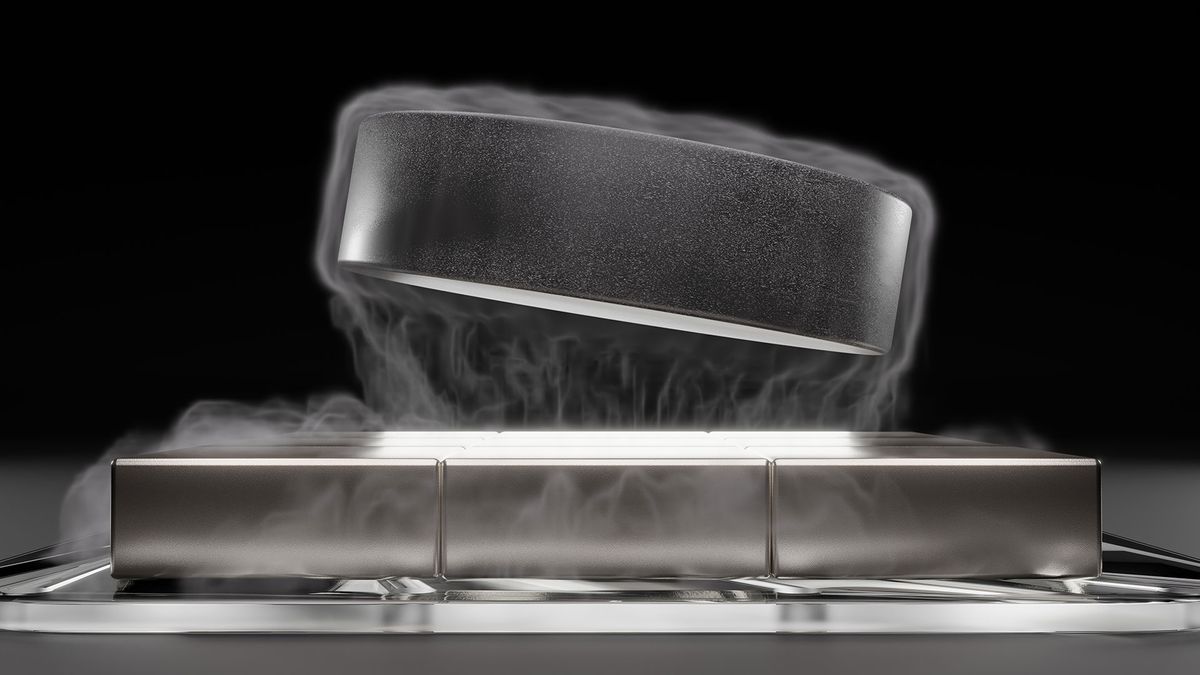xpost from https://lemmy.world/post/2494271
Researchers have discovered a new compound called LK-99 that could enable the fabrication of room-temperature, ambient-pressure superconductors. Two separate sources have provided very preliminary confirmations of this breakthrough, including a simulation indicating it could be possible and a short video from Chinese researchers that seems to indicate some properties of superconductivity.
Holy fucking shit
Edit: Article was disappointing, unfortunately. A roundup of preliminary analyses, including a supercomputer simulation, a Russian amateur claiming to have synthesized it, and a Chinese lab confirming the study. Given the fact that others are having difficulty replicating this, and the other drama surrounding the discovery I’m going to need better proof than this before getting really excited.
Yep. This is one of those world changing tech advances.
Replication is a huge step.
But I temper the excitement with the memory that I read my first The Coming Room Temp Superconductor revolution 30 or so years ago. IIRC it was a cover story in Scientific American in the early 90s.
That said, fuck I hope they have cracked a scalable RTS.
First off, don’t refer to the 90’s as “30” years ago. That’s just rude dude…
Second, yeah this has been an ongoing theme for decades…
Wait, did I get old? What the fuck?!
Wait, did I get old?
Nah. No one every gets old… Old is always 10 years older than you are now.
Agreed, I want to believe so bad, but the Meisner effect is so easy to fake with cameras that even video proof doesn’t cut it for me. I guess at this point it’ll take a preprint from a National Lab . Thankfully that won’t take long apparently given how easy this is to synthesize.
The 90s were 30 years ago? Damn.
“The Matrix” was released closer in time to the French Revolution than to today.
Please. Spare me.
GenXer reading this… First time?
actually agree, I copied the summary but it’s more sensational than it should be… I’m excited but I’ve just gone from 1% believing it to 5%, it’s far from confirmed.
considering what it would mean I’m still super excited however… but I’ll edit the summary
the Lawrence Livermore researcher seeming to post a simulation that supports it pushes me toward the “it’s real” camp, but yeah someone needs to recreate this thing, if it can’t be replicated from the paper then it’s worthless, even if the original sample really is a rtsc
Admittedly this isn’t anywhere near my field of expertise, but I do have some background in computer-aided drug design. Supercomputers are incredible tools, but they’re no slam dunk. Lots of candidates they propose don’t pan out in testing.
There’s moderate consensus that there’s a theoretical basis that this material should be an interesting candidate for a high temperature superconductor but is not a favourable output of the recipe used to make it.
Additionally there are now 4 independent reports (including the original and a highly prestigious chinese university) of it exhibiting diamagnetic properties (with no theoretical basis for non-superconducting diamagnetism).
This is more than enough evidence to say that the most reasonable interpretation is a room temperature superconducting material that sucks and is hard to make.
Upgrading that to a high confidence claim that the original research is reproduced will take a few weeks at least, so no super excitent yet, but the claim is fairly solid.
deleted by creator
Cool edit, i came to read some comments in between reading the article cause I got bored, finished the article and saw your edit. Agreed.
Ars has a interesting article about it and from what it said it’s not as easy to fabricate as everyone claims. The process is simple but very random and imprecise. It’s possible that you can get a superconductor this way but only sometimes and in parts of the crystal. This will make confirmation difficult and makes it sound even more like BS (“it works for me, you’re doing it wrong…”).
This seems like a good page to keep track of the replication attempts. https://forums.spacebattles.com/threads/claims-of-room-temperature-and-ambient-pressure-superconductor.1106083/page-21
Thank you so much! Comments like these is why I love Lemmy. A hidden gem in the sea of news spam.
If I can ask, how did you even find that place?
I found it on mastodon. Searching hashtag #LK99
Wow, great link. Thanks for that. Looking like bullshit.
No way this is true, come on. Room temperature super conductor made by some simple chemical reaction?
Richard Feynman had a really good bit about how bad human intuition is about quantum physics. About how we evolved to throw a rock at an animal out on a grass plane, and not to make good guesses about the nature of particles so small we can’t even fathom them.
Seems appropriate here.
Why not? Lots of technologies are literally just about mixing chemicals together, and we could have done that at any point in time prior, we just didn’t.
Lithium ion battery technology is literally just mixing materials together. We’ve had access to lithium for centuries but we didn’t turn that technology into batteries until about 30 years ago.
It’s not the same. This is almost like alchemy.
The simple chemistry is pretty specific and doesn’t work very well (it usually makes a semiconductor instead, and even when it does work, it’s a few tiny impure specks most of the time).
Why is it unbelievable?
Why not? The search space is massive, and it’s not the first time humanity stumbled upon some simple revolutionary discovery.
Just because we failed to figure out the conceptually simple thing until now, doesn’t mean it can’t be the case. Anything else is just some form of human exceptionalism.
Please be real
Well you know about all those fancy battery technologies you’ve seen in the news? Some of those are already 30 years old by now and they are still stuck in the lab whereas Li-ion actually became a product. There has got to be a good reason why that happened. Maybe the technology was too expensive, too fragile, or maybe there was another drawback the article never mentioned. Same kinds of challenges face superconductors, graphene and fusion. That’s why we have these headlines periodically.
I’m super excited and hopeful. But then I remember the EmDrive and cold fusion, so these scientific hoaxes do occur. But damn if it’s true!
No one ever really believe the EmDrive worked. It was just the media getting super over excited about it, but no one with any actual credibility ever gave it much credence.
This however is actually getting attention a real scientists so it is a little different.
NASA was testing the EM Drive. To me this feels exactly the same. I would probably also include Tabby’s star as another analogy.
I want it to work, but I’m not getting my hopes up yet.
Dave Jones of the EEVBLOG recently did an informative and unfortunate video covering this. https://youtu.be/QHPFphlzwdQ
Im so fucking hyped for this
deleted by creator
eh, gonna remain skeptical about this until a commercial application is developed and it’s not just some stupid marketing term.








